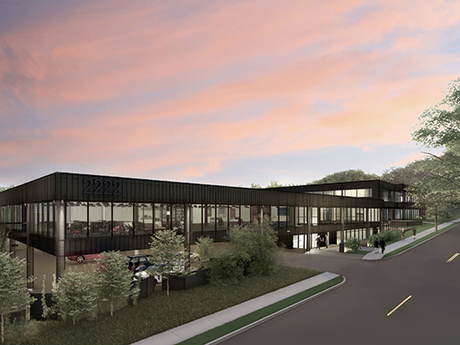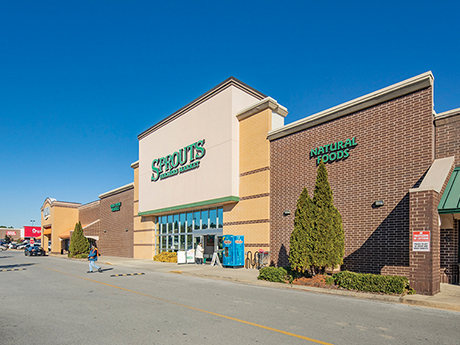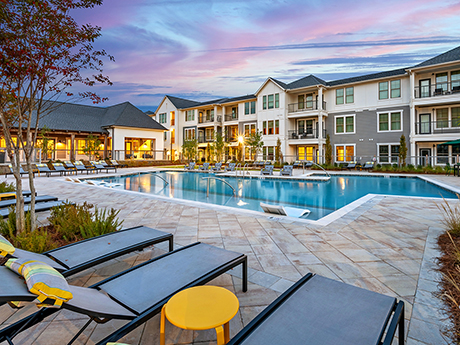Birmingham’s office market is facing many of the same challenges our peer markets are encountering. Lingering economic uncertainties have created a very cautious environment. Most tenants and business owners I speak with are either cautiously pessimistic or cautiously optimistic about the economy. Regardless of which side is right, economic projections for 2023 have caused a general slowdown in deal flow as decision makers have become more guarded with business decisions and commitment levels. Is there cause for concern in Birmingham? Historically, Birmingham’s office market has remained stable during challenging times, dodging the extreme highs and lows as markets ebb and flow nationwide. Birmingham’s office market consists of approximately 19 million square feet of multi-tenant inventory across five submarkets, four of which have Class A inventory. Fundamentals, subleases As of fourth-quarter 2022, the occupancy rate for Birmingham’s office market sits at 83.8 percent. For the same period over the last five years, the occupancy rate has only slightly fluctuated year-over-year, ranging from 86.1 percent in fourth-quarter 2018 to 83.8 percent in fourth-quarter 2020. The current rate is at 83.8 percent, illustrating consistency throughout a very problematic time for the office sector. Birmingham’s office sublease inventory is rising, but again, not to …
Market Reports
While the Birmingham market never fluctuates too heavily in either direction, it typically remains relatively stable compared to national trends. Such has been the case with the effects of COVID-19. Birmingham is well-positioned for a return to the office, thanks in large part to our economy’s heavy makeup of local and regional businesses. Most smaller businesses have been in the office for some time, while large national enterprises still wrestle with what normal operations will look like moving forward. General market information Birmingham saw some positive absorption in 2021, with the occupancy rate holding steady at 81 percent, around the historical average. Birmingham comprises approximately 20 million square feet of office space with five main submarkets. Midtown, comprising mostly mid-size, Class A office buildings, remains the strongest submarket with an occupancy rate over 92 percent and rental rates in the mid to high $20s per square foot ($24.12 per square foot average). The Central Business District has seen companies leave for suburban submarkets like Midtown and Highway 280/Interstate 459, however the occupancy rate of 78 percent has remained relatively stable over the past couple of years, with rents in the low to mid $20s per square foot ($21.07 per square …
Like many of the markets within the Sun Belt, Birmingham’s economy remained relatively resilient through the emergence of the COVID-19 pandemic. Despite its share of small business and restaurant closures, leasing activity is back to par, and owners continue to see steadily rising rental rates — up 3.1 percent over the last 12 months — as tenant demand continues to be robust. Retail absorption over the last 12 months is a healthy 400,000 square feet compared to -510,000 square feet a year ago, which is a phenomenal 909,000-square-foot change just 18 months out from the emergence of the Coronavirus and effective shutdown of the U.S. economy. As Americans return to whatever the new normal is deemed to be and retail conditions continue to rebound, Birmingham is poised and ready to stake its claim in the South’s hierarchy of bourgeoning retail markets. Over the course of retail’s revival during the last 12 to 15 months, development has picked up throughout the Birmingham MSA, fueled primarily by build-to-suit projects for established chains in rapidly expanding suburban markets like Hoover. Stadium Trace Village, a master-planned, mixed-use development at Interstate 459 and Ala. Highway 150, has been one of the most recent projects to …
The Sun Belt is experiencing unprecedented growth with in-migration trends setting the stage for further expansion and bolstering in-place multifamily product. This includes Birmingham, which has weathered COVID-19 well not only from an employment perspective, but from a rent growth perspective too. The latter is not sustainable without the former, and local capital investments point to more tailwinds. Birmingham has been on the move, adding 60,000 jobs since April 2020 and becoming the primary driver of economic growth in Alabama. With the influx of new jobs, the city has surpassed its pre-pandemic peak and as a result, the city’s rent growth has outperformed the national average for several years. There was a short period where downtown rents and velocity fell off during the pandemic, but it came back fast and strong. Riding the tailwinds One notable example of in-migration, both investment and population wise, was when Landing announced it would be relocating its headquarters from San Francisco to Birmingham. Landing is a tech startup that provides access to a network of fully furnished apartments, and its move to the city is expected to create more than 800 direct, full-time jobs. The announcement was exciting locally as Birmingham presumably wouldn’t have …
The Birmingham multifamily market demonstrated its evolving strength last year. Continued job growth and limited apartment inventory led to the area reporting its highest occupancy rate in 10 years (94.8 percent) and monthly effective rent advancing 1.8 percent annually to $984 by year-end. In the early months of 2020, we did not see any slowdown in terms of deal volume. Due to rising concerns around market volatility and ongoing impacts of the COVID-19 crisis, we are faced with uncertainty in terms of how the local Birmingham area, along with the rest of the country, will perform in the year ahead. It is difficult to predict market activity, but Birmingham has demonstrated positive trends worth noting. Catching investors’ eyes In recent years, the area’s employment growth and strong fundamentals have piqued investor interest. Out-of-state groups are increasingly venturing into Birmingham. This trend has led local developers to emphasize merchant-builds, actively constructing and redeveloping properties to fill this competitive demand. Off-market transactions have recently seen an increase in frequency as investors are able to be more aggressive on pricing, which is enhanced by this unprecedented interest rate environment. Across all asset classes, the Birmingham market has enticed investors with a variety of …
What a time to write an article on the state of the retail real estate market in Birmingham. A few short weeks ago this would have been a much easier task. The fundamentals of the Birmingham retail market are healthy and exciting despite the current health crisis and the fact that we have experienced very little population growth. I travel across the country regularly, and there is a national undercurrent about Birmingham that is exciting. Birmingham is spoken about nationally as a city with great food and quality of life, which are the types of things always said about a city prior to it hitting a tipping point. We expect that consumer behavior is going to be different coming out of the pandemic, and that the way retail and restaurant businesses operate will continue to adapt to that consumer behavior. Traditional developments Traditional shopping centers continue to be strong regional draws, with tenant mixes focusing on local and national brands. Lee Branch is one of the most successful in Birmingham. The Dick’s Sporting Goods and Golf Galaxy side-by-side concept opened in February at Lee Branch and is the first of its kind in the state. Discount retail, although not new, …
The surge in demand for Birmingham’s industrial real estate over the last few years has resulted in the highest occupancy rates in over 20 years. Alabama’s level of business friendliness has created a strong economy and high level of job growth since the end of the Great Recession. Manufacturing is a key driver of job growth. Overall vacancy rates in Birmingham’s multi-tenant industrial market have fallen to around 7 percent, which is an all-time low. Average rental rates have crept up to approximately $4.25 per square foot, which is historically high for Birmingham but still significantly lower than rents in larger markets around the Southeast. In spite of the robust activity, there are no active plans for any sort of speculative multi-tenant developments in the market. The last project was the 90,000-square-foot Oxmoor Logistics Center located in the Oxmoor Valley submarket, which was completed in the fourth quarter of 2018. It is currently 100 percent occupied. However, there are over 2 million square feet of individual projects that will be completed before the end of 2019. One is a $1.3 billion expansion at the Mercedes-Benz Tuscaloosa plant, which includes a new body shop, enhancements to the SUV assembly shop and …
Birmingham’s retail market continued to see positive growth in 2018, and it’s safe to argue this is largely due to a significant amount of retail space being backfilled with entertainment, discount, medical and first-to-market tenants that otherwise may not have been able to enter the market. Dave & Buster’s backfilling a Forever 21 space at the Riverchase Galleria, Urban Air leasing a former hhgregg box in Trussville, Ollie’s acquiring the former Toys ‘R’ Us box in Hoover and Floor & Décor backfilling the former Kmart in Homewood are just a few recent examples of this in Birmingham. Two additional noteworthy deals that have been recently announced include REI opening its first Birmingham location in a portion of the former Toys ‘R’ Us box at The Summit and the Dick’s Sporting Goods/Golf Galaxy combo store moving into the soon-to-be former Academy Sports + Outdoors space at Lee Branch. The new combo store will be Golf Galaxy’s first location in Alabama. These two deals alone all but confirm this backfilling trend is going to continue for some time. More often than not, you will find these new tenants are paying higher rents, driving larger traffic volumes and generating more sales tax income …
Birmingham is a unique market for Class A office space. Last year had its fair share of notable transactions (both sales and leases), but overall a few key transactions from previous years pushed absorption in the negative figures. The most significant deal that is still impacting our market was a tenant relocation into the Red Roofs Colonnade (Colonnade North and South) located at the interchange of Highway 280 and Interstate 459, the heart of the 280/459 office submarket. Southern Co. Services signed a 700,000-square-foot, long-term lease at the project, and as of Jan. 1, the Red Roofs are now fully occupied. This transaction left a sizable block of Class A office space along the 280/459 corridor. Soon after announcing the relocation, FIS backfilled about 112,500 square feet within Inverness Center North. The CBD is still recovering from Regions Financial giving back about 160,000 square feet at Regions/Harbert Plaza, but this building has seen a large amount of activity since this announcement. Our market is in the midst of absorbing these previous deals now and moving in the right direction. This year has gotten off to a quick start with two encouraging announcements. Shortly after Wells Fargo announced it will be …
Contrary to some Southeast markets’ recent shift in focus to the suburbs, construction in Central Birmingham continues to boom with activity. The Central Birmingham cluster — encompassing the CBD, Southside, Parkside District, University of Alabama Birmingham (UAB) and Lakeview neighborhoods — has established itself as a strong-performing submarket with 3,800 multifamily units total, according to CoStar. The growing number of desirable amenities such as parks, restaurants, museums and trails has helped foster rent growth and additional projects. Birmingham’s overall multifamily construction activity has been consistent with 12,000 units added from 2009 to 2018 (approximately 1,300 units per year). Within the Birmingham metro itself, multifamily construction is highly concentrated in Central Birmingham, which experienced a 225 percent hike in multifamily construction from a low in second-quarter 2017 to 850 units currently under construction and 1,400 units planned or proposed. Suburban supply has been tempered compared to similar metros given the lack of zoned land available. There are a number of planned suburban projects, including projects by Dobbins Group and Davis Development, but none under construction. Drivers of this trend Rents achieved in Central Birmingham enable multifamily development to ensue despite higher construction costs. The Pizitz and Thomas Jefferson Tower (TJ) are …







